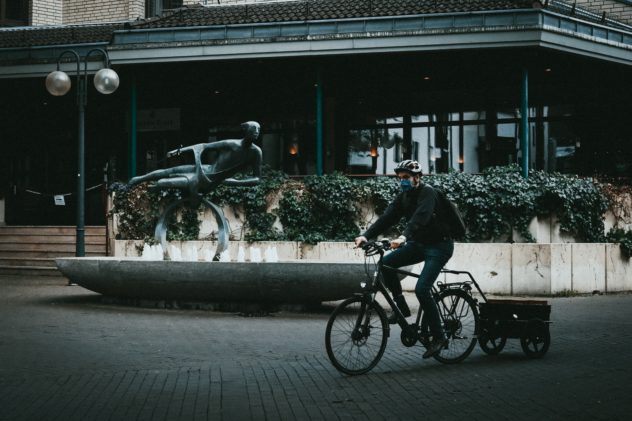Pre-Reading Questions:
- Do you take a cab at all times? Why or why not?
- What do you usually ride when going to places?
Vocabulary:
- route /root/
- rush hour /ruhsh OU-er/
- banned /band/
- alternative /awl-TUR-nuh-tiv/
- interior /in-TEER-ee-er/
[noun] — a particular way or direction between places
Passengers nowadays will have to take different routes due to lockdown.
[noun] — the busy part of the day when towns and cities are crowded, either in the morning when people are travelling to work, or in the evening when people are travelling home
It would be best to avoid rush hours when coming home from the mall.
[adjective] — prohibited, not allowed
Liquids more than 100 ml are banned in carry-on bags.
[adjective] — offering a choice between two or more things
What are your alternatives in case your plan fails?
[adjective] — the inside part of something
It’s a must to clean the interiors of public vehicles every once in a while.
Commuting to work is very difficult as this pandemic is still happening. So what are some ways for workers to get away from “rush hour peaks”?
1. Invest on an electric scooter
Lots of towns all over the world including Paris and LA have e-scooters as one of their modes of transportation. E-scooters run at a speed of 10mph that can cover up to two to four miles of ride, notably faster than e-bikes. E-scooters are banned on public roads in the UK, but the chief executive of a micro-mobility firm Adam Norris believes that with high-vis clothing and models with larger wheels come improved safety.
2. No parking? No problem
There’s another unique alternative that lets people pick parking spaces that are for rent. Since traffic builds up during the pandemic, car owners aren’t likely to go for commuting and transporting longer hours in personal vehicles, and people might resort to micro-mobility vehicles. So Anthony Eskinazi, who runs the app Just Park, encourages owners to hire in-car parks and make 300 garage parking lots into scooter and bicycle areas.
3. Grab a cab
Cab drivers still continue to accept calls from customers under the condition that they clean the interiors of the cars in between passengers. Uber also supplies them with PPE equipment like hand gloves and face masks. Despite these, Milanesi is curious as to how ride-hailing companies will earn the trust of commuters that the vehicles are safe. Uber responds by requiring cab drivers to take and share selfies to verify that they are protected with masks mostly during service.
4. Flying taxis
What if all else fails and you’re left with flying taxis as your only choice? Although all 175 drone taxi designs are not yet in service in any country, it may be a good alternative, too. But according to an associate aerospace engineering professor, all we have to do for now is wait. The coronavirus will most likely delay their development instead of encouraging it.
Comprehension Questions:
- According to Norris, what can improve the safety of using e-scooters?
- What does Uber supply their drivers as mentioned in the article?
- According to the article, how many drone taxi designs are there?
- Out of the four alternatives, which is not in service in any country for now?
- E-scooters run at how many speed caps?
Discussion Questions:
- Do you think e-scooters are safe? Kindly explain your answer.
- In your opinion, what are the advantages and disadvantages of using a flying taxi for transportation?
- Which among the mentioned alternatives do you think would be the most useful for employees?
- Since bicycles are widely popular in Japan, are e-bikes being used in your country, too? Please share.
- What is the most expensive mode of transportation in your country? Please tell me more.
